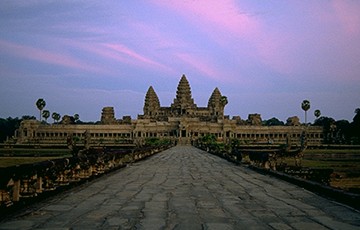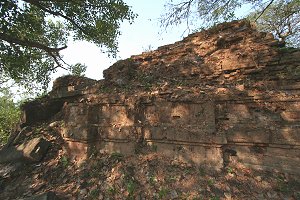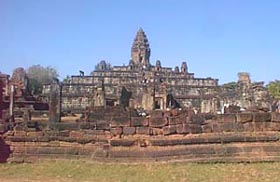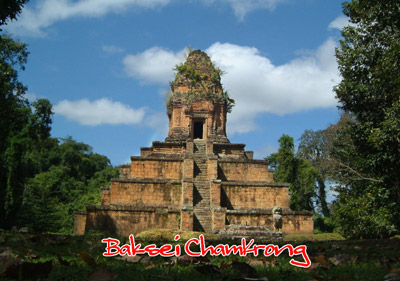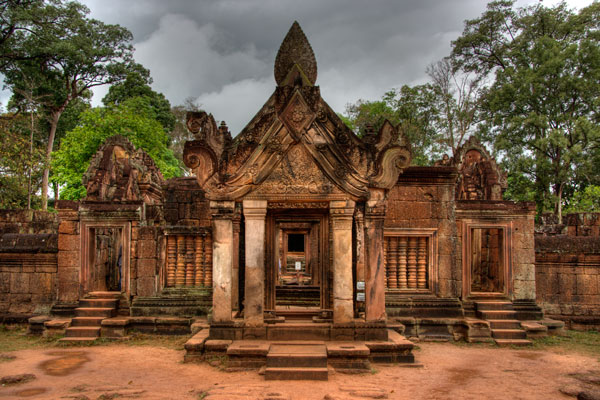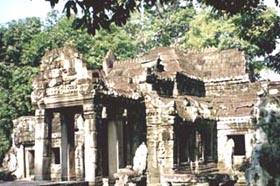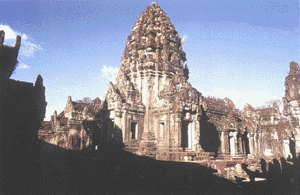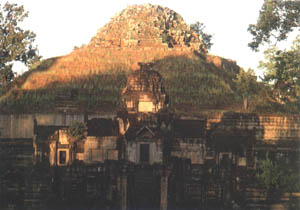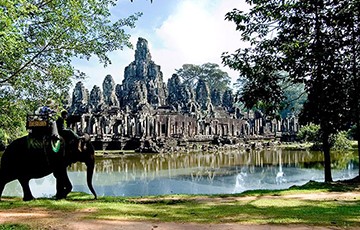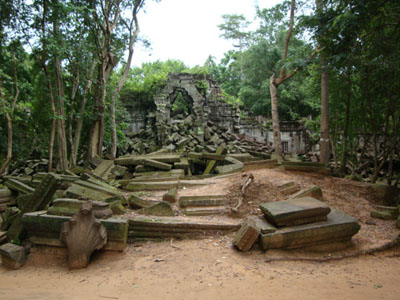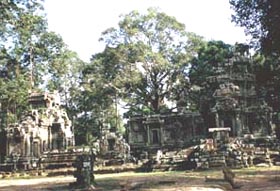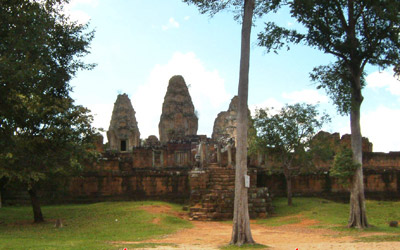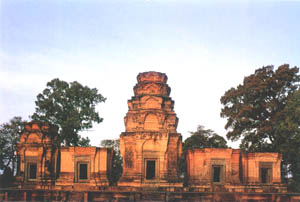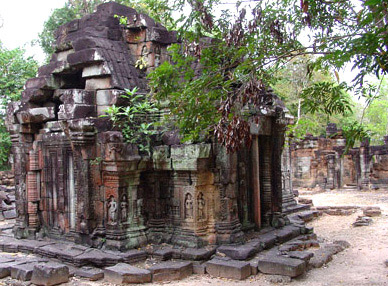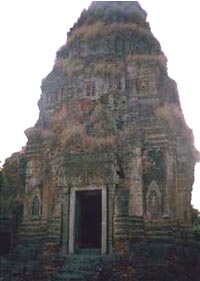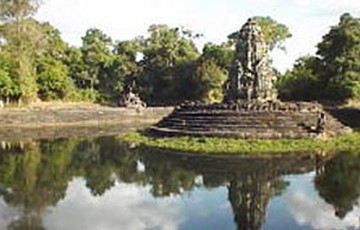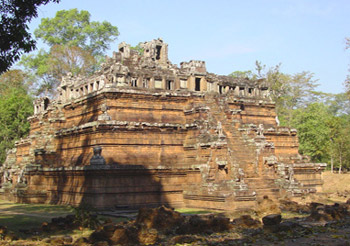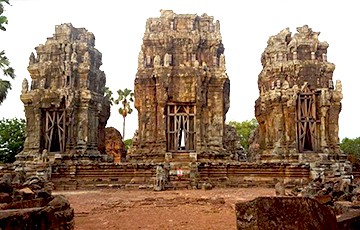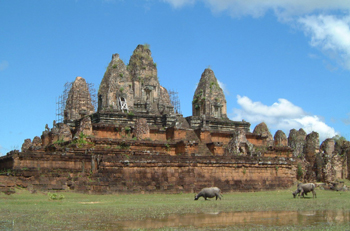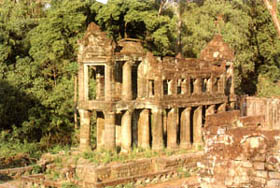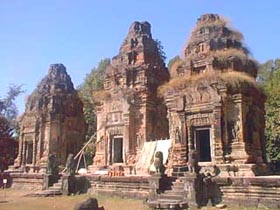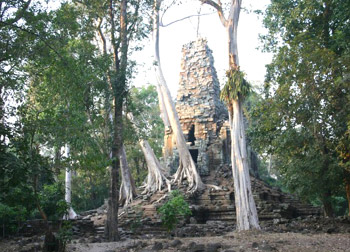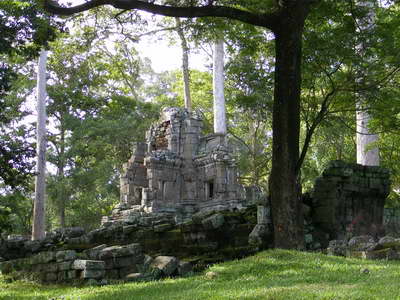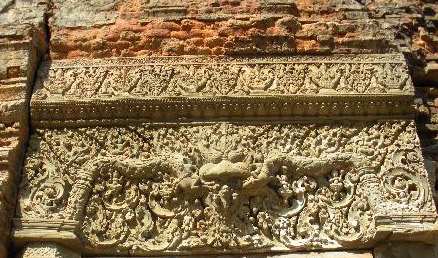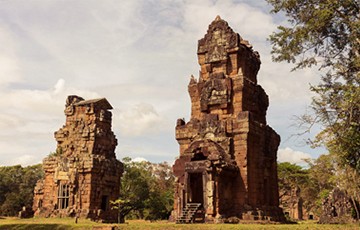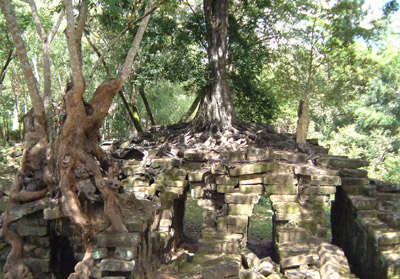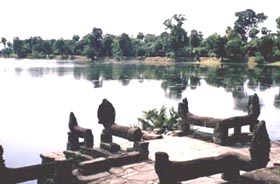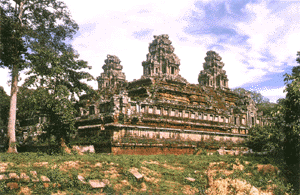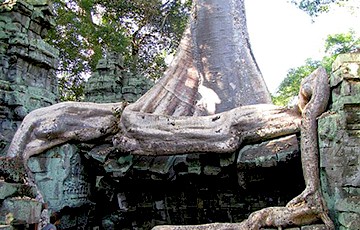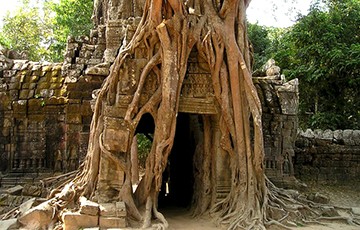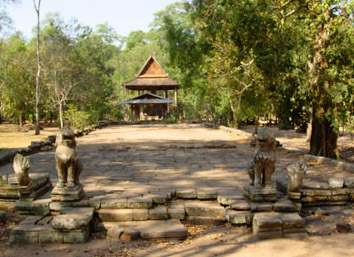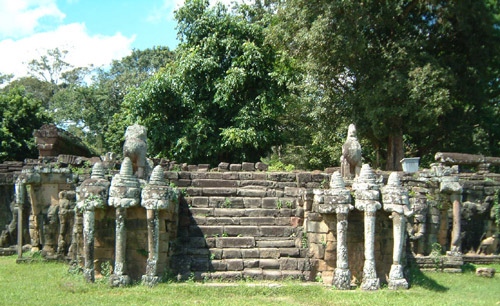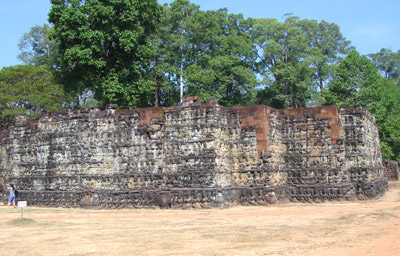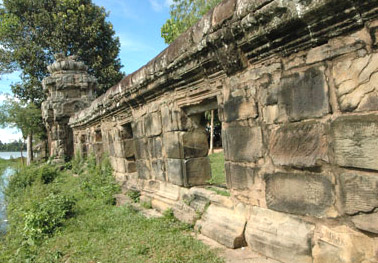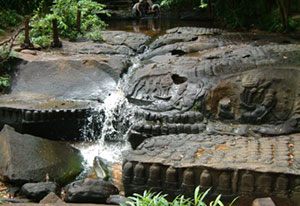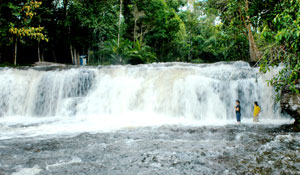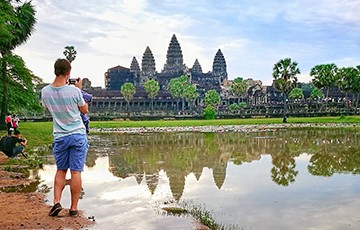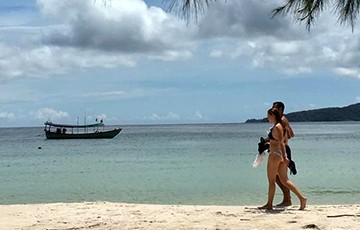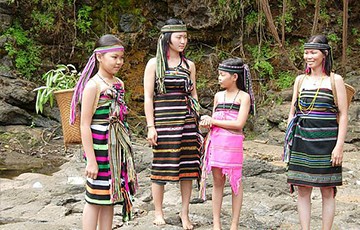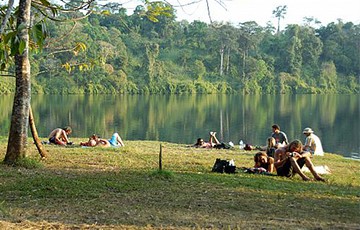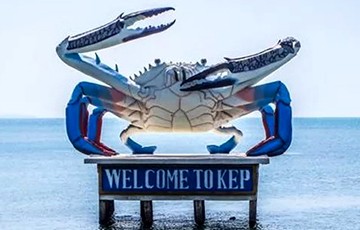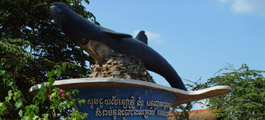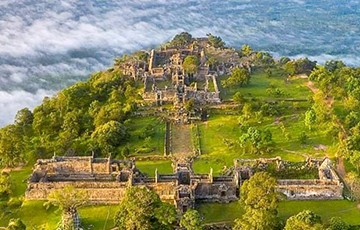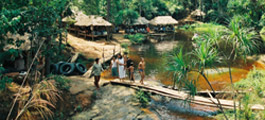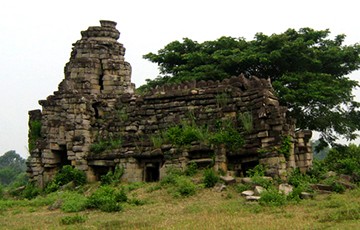Prasat Bayon
We stand before it stunned. It is like nothing else in the land. The Bayon is located in the center of the city of Angkor Thom 1500 meters (4921 feet) from the south gate. Enter tower of the Bayon is from the east. Prasat Bayon was built in late 12th century to early 13th century, by the King Jayavarman VII, dedicated to Buddhist.
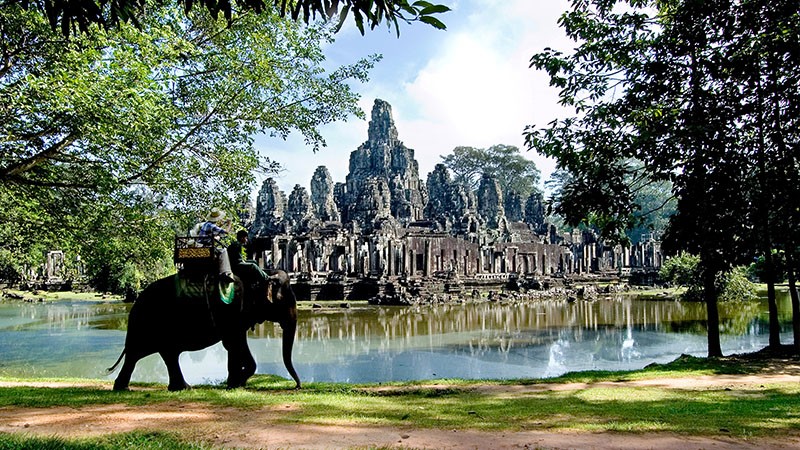
BACKGROUND
The Bayon vies with Angkor Wat the favorite monument of visitors. the two evoke similar aesthetic responses yet are different in purpose, design, architecture and decoration. The dense jungle surround the temple camouflaged its position in relation to other structures at Angkor so it was not known for some time that the Bayon stands in the exact centre of the city of Angkor Thom.
Even after this was known, the Bayon was erroneously connected with the city of Yasovarman I and thus dated to the ninth century. A pediment found in 1925 depicting an Avalokitesvara identified the Bayon as a Buddhist temple.
This discovery moved the date of the monument ahead some 300 years to the late twelfth century. Even though the date is firmly implanted and supported by archaeological evidence, the Bayon remains one of the most enigmatic temples of the Angkor group. Its symbolism, original form and subsequent changes and constructions have not yet been untangled.
The Bayon was built nearly 100 years after Angkor Wat. The basic structure and earliest part of the temple ate not known. Since it was located at the centre of a royal city it seems possible that the Bayon would have originally been a temple-mountain conforming to the symbolism of a microcosm of Mount Meru. The middle part of the temple was extended during the second phase of building. The Bayon of today belong to the third and last phase of the art style.
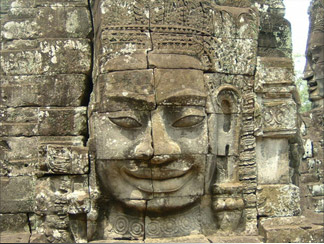 The architectural scale and composition of the Bayon exude grandness in every aspects. Its elements juxtapose each other to create balance and harmony.
The architectural scale and composition of the Bayon exude grandness in every aspects. Its elements juxtapose each other to create balance and harmony.
Over 2000 large faces carved on the 54 tower give this temple its majestic character. The faces with slightly curving lips, eyes placed in shadow by the lowered lids utter not a word and yet force you to guess much, wrote P Jennerat de Beerski in the 1920s. It is generally accepted that four faces on each of the tower are images of the bodhisattva Avalokitesvara and that they signify the omnipresence of the king. The characteristics of this faces - a broad forehead, downcast eyes, wild nostrils, thick lips that curl upwards slightly at the ends-combine to reflect the famous 'Smile of Angkor'.
LAYOUT
A peculiarity of the Bayon is the absence of an enclosing wall. It is, though, protected by the wall surrounding the city of Angkor Thom. The basic plan of the Bayon is a simple one comprising three levels (1-3). The first and second levels are square galleries featuring bas-reliefs. A circular Central Sanctuary dominates the third level. Despite this seemingly simple plan, the arrangement of the Bayon is complex, with a maze of galleries, passages and steps connected in a way that make the levels practically indistinguishable and creates dim lighting, narrow walkways, and low ceilings.
Enter the Bayon from the east at the steps leading to a terrace. The interior of the Bayon, the one a visitor first encounters, is a square gallery on the ground or first level. This gallery is interspersed with eight entry towers - one in each corner and one in the middle of each side. All of the eight structures are in the shape of a cross. The gallery was probably originally covered with a root, perhaps of wood.
Tip: For those who have limited time, enter the Bayon at the east, turn left at the first gallery and follow the arrow marked on the plan.
The decoration on the pillars in front of the entry tower at the east is characteristic of the Bayon style and is exceptionally beautiful. It is the recurring theme of the Apsaras but with a different treatment. A typical composition is a group of three Asaras dancing on a bed of lotuses. They are in a triangular formation. The figure in the center is larger than those on either side.
A plain background highlights both the dancers and the intricately carved frame comprising a lightly etched pattern of flowers and leaves that look like tapestry. (Although a group of three dancers is typical, similar scenes are made up only one or two dancers.)
Tip: The absence of a roof on these pillars allows sufficient light for the visitor to view and photograph this motif at all times of the day.
The two galleries of bas-reliefs are distinguished by the degree of elevation.
The first or outer gallery is all on one level whereas the second or inner gallery is on different level and the passage is some times difficult. The layout of the inner gallery can be misleading but as lone as the relief are in view you are still in the second gallery.
On the interior of the first level there are two libraries (6), one on each side near the corners at the east side of the gallery.
The second gallery of bas-reliefs has a tower in each corner and another one on each side which combines to form an entry tower.
On the interior of the second level there is a unit of galleries at each corner that form a cross with indentation. Each corner has a tower and a courtyard. Agigh terrace parallels the profile of the cross-shaped gallery.
The architectural climax is the third level, with the Central Sanctuary and the faces of Avalokitesvara. The east side of this area is crammed with a series of small rooms and entry towers .The multitude of faces at different levels affords endless fascination. Godliness in the majesty and the size; mystery in the expression wrote de Beer ski when he looked at the faces in the 1920s.
The central mass is circular, a shape that is uncommon in Khmer art. Small porches with pediments provide the bases for the monumental faces while windows with balusters keep the diffusion of light to a minimum. The faces on the four sides of the eight tower marking the cardinal directions are exceptionally dramatic depictions.
The interior of the Central Sanctuary is and surrounded by a narrow passage. The summit of the Central mass is undoubtedly the Golden Tower which Zhou Daguan said marked the center of the Kingdom and was flanked by more than twenty lesser tower and several hundred stone chambers.
THE GALLERY OF BAS-RELIEFS
The have homely human things to tell and they tell them without affectation, wrote H Churchill Candee of the bas-reliefs in the galleries of the Bayon.
Tip: View the galleries of bas-reliefs clockwise, always keeping the monument on the right. Do not get so absorbed with the reliefs that you forget to stop at each opening and enhoy the view of the faces on the third level.
The bas-reliefs at the Bayon consist of two galleries. The inner one is decorated with mythical scenes. The bas-reliefs on the outer gallery are a marked departure from anything previously seen at Angkor. They contain genre scenes of everyday life-markets, fishing, festivals with cockfights and jugglers and so on-and history scenes with battles and processions. The relief are more deeply carved than at Angkor Wat but the representation is less stylized. The scenes are presented mostly in two or three horizontal panels.






